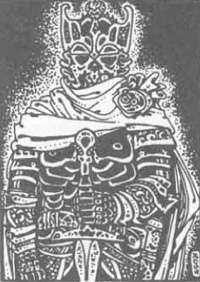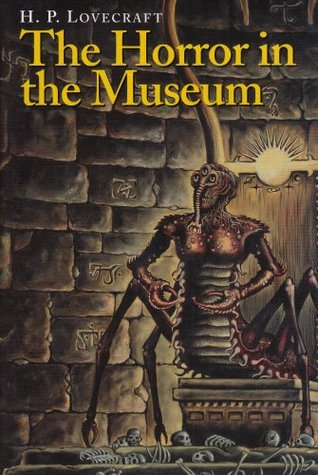
If you don’t own Paul Baldowski’s The Cthulhu Hack, buy it now. You can learn more about this wonderful game by visiting www.justcrunch.com. I’ll wait here until your done.
Now that you’re back, take a look at Mr. Baldowski’s work, a clever hack of David Black’s The Black Hack, an inspired role-playing game for dungeon-crawling fantasy adventure. In just a little more than 40 pages, The Cthulhu Hack gives you a complete game that launches its players into deadly conflict with the soul-shrivelling horrors of a Lovecraftian world.
The game’s core mechanic — roll a Save on a d20 that is below a specific value — determines success or failure of everything and everyone, including blood-crazed Cultists and sanity-blasting Shoggoths. Like Dungeon World, another favorite game of mine, the players rather than the GM, make almost all the rolls, including actions related to whether that mad Cultist’s machete painfully slices through muscle or harmlessly through air.
Add to the core mechanic features such as Usage Dice, Advantages, and Disadvantages to this simple, flexible core mechanic, and these simple rules cover everything from clue finding, suspect interrogating, ammo tracking, and sanity losing. It is the latter aspect of The Cthulhu Hack that I’ve been looking for for years, but more on sanity later.
Usage Dice cover resource management. For example, all investigators have a Flashlight Die that represents that investigators resources when he “needs to spot, uncover, trip over, research, stumble [upon], recall or otherwise discover something” (to quote the rules). When this comes up, the player rolls his investigator’s Flashlight Die. If the die comes up a 1 or 2, it decreases in size (from d8 to d6, for example). If a d4 Usage Die comes up a 1 or 2, the investigator is out of that resource. Nota Bene: A 1 or 2 doesn’t mean the investigator fails. It means he succeeds, but at a cost (represented by the Usage Die decreasing in size).
An Advantage means the player rolls 2d20 for a Save and choose whichever die result he prefers. A Disadvantage means the player rolls 2d20 for a Save and the GM chooses whichever die result he prefers. I’ve read this mechanic comes from D&D 5E. Regardless of its origin, it’s a great rule that replaces charts full of situational modifiers. Does your investigator have to sneak across a squeaky, dilapidated floor made of water-damaged boards? No need to consult a chart of stealth modifiers. The GM simply rules that your investigator is at a Disadvantage to do so.
I’ve played horror games before, and most I’ve played use some sort of fear or sanity point mechanic that tends to be both cumbersome and tedious, as well as requiring several pages of text to explain. The Cthulhu Hack handles sanity (or the lack thereof) as a Usage Die detailed by little more than one page of rules. Seriously. I could cut-and-paste the sanity rules into a document, fiddle with font and size and margins, and fit all of the sanity rules on one side of a single page.
The Cthulhu Hack stands severed head and mangled shoulders above every other game of its genre that I’ve read or played. Get some friends together and have them choose from one of five Classes and add one of 30 occupations. Creating an investigator is snap, and the rules for antagonists facilitate making them up more or less on the fly if necessary, which makes it easier for the GM to put more thought into the story rather than the stats behind the story.

Speaking of investigators, a sample character follows this paragraph. Ability scores (which make up the aforementioned Saves) are generated by rolling 3d6. “If a player rolls a Save with a value of 15 or more the next must be rolled with 2d6+2. After that continue with 3d6 until the end or another 15+ is rolled. Once the player rolls all six, she can choose to swap around” (to quote the rules again).
Dr. Horatio Phelps
Occupation: Archaeologist
Class/Level: Adventurer/1
STR 7, DEX 7, CON 9, WIS 15, INT 16, CHA 8
Hit Points: 9
Hit Die: d8
Sanity Die: d8
Armed Damage: 1d6
Improvised Damage: 1d4
Flashlights/Smokes: d8/d6
Special: Roll with Advantage when making a CON Save to avoid damage from poison, drugs, alcohol, or paralysis. Once per game session, apply powers of deduction and reasoning to reach an apposite conclusion.
Postscript: The last Sunday of this month, I’m hosting a dinner-and-gaming night featuring The Cthulhu Hack and a short adventure I’m writing entitled The Strange Case of the Bell Witch Bootleggers. I intend to post a playtest review a day or two later.
Tags: horror, reviews, The Cthulhu Hack






